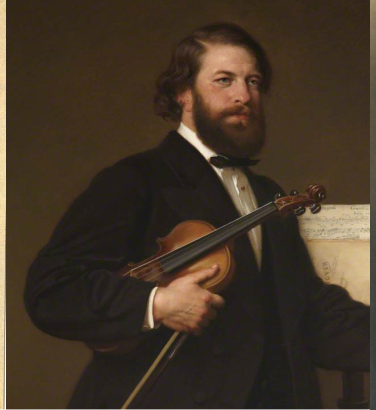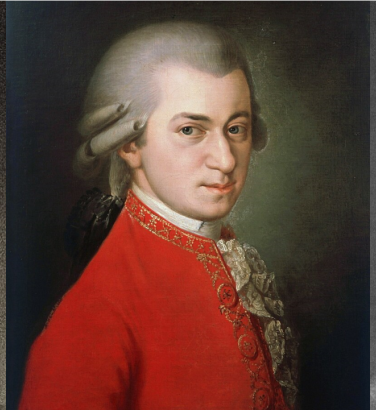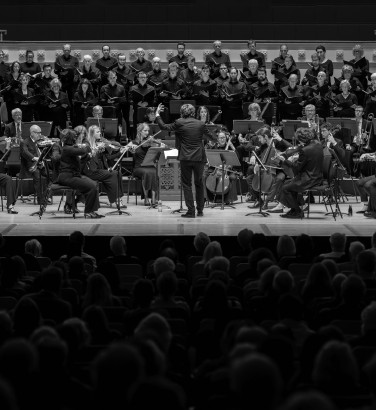
Mozart and the Weber sisters
2 Sep 2024
News Story
From left to right: the sisters Aloysia (anonymous), Constanze (Joseph Lange, c. 1782) and Josepha Weber (second from left, anonymous engraving)
To some extent, our knowledge of pre-20th century musicians is hampered by our having to rely on written accounts of their skills: with the best will in the world, they are a poor substitute for what a recording might convey. As dubious as the earliest of these can be in terms of sound quality, there would for example be a gaping hole in our appreciation of past performance practices had the voice of the castrato singer Alessandro Moreschi not been preserved on record in 1902.
That said, while critics’ reviews, diaries kept by music lovers or letters from composers can reveal a great deal about the skills of musicians who predate the recorded age, the most valuable resource we have is unquestionably the music written for them to perform. Ideally, this should be tailored to fit their own skills: there would be little point in giving a singer famed for their lyricism a patter song, for instance, or expecting an organist known for their cerebral approach to the works of Bach to show much interest in music that is all style and no substance.
This was a firm belief of Mozart's: he made an effort to write music to suit its intended performers, none more so than in the case of the Weber sisters. He met Josepha, Aloysia and Constanze in 1777 when passing through their hometown of Mannheim on the way to Paris and formed what proved to be a lasting attachment with the entire family.
At this point, it is only fair to admit that there was a fourth sister, but Sophie (the youngest of them) is little more than a footnote in this story. She would admittedly be among the chief witnesses to Mozart's final illness and death years later, but in musical terms, she had by far the least impact on him of any of the siblings.
The 21-year-old Mozart was most taken with Aloysia. Officially her singing teacher, at some point his feelings for her deepened into love. Her talent is clear from the music he wrote for her, including the aria Popoli di Tessaglia!, K. 316, where the range extends even higher than arguably his best-known soprano role … of which more later.
Click here to watch Natalie Dessay sing Popoli di Tessaglia!.
It’s not clear what Aloysia thought of Mozart at this stage, but on their reunion as he made his way home from Paris in late 1778, it was clear that his feelings were not (or perhaps no longer) reciprocated. They might have gone their separate ways here and never met again, had the Weber family not moved to Vienna in 1779, with Mozart himself following suit two years later.
Although Aloysia was married by this stage, he was still close enough to the Webers to move in with them for a few months, only finding other lodgings when it became clear that he and Constanze were courting. The two were married in mid-1782 – having already been living together, to her mother’s consternation – and remained together through thick and thin, not least the constant spectre of money worries. Constanze would go on to show remarkable financial acumen on her husband’s death in 1791, putting on concerts in his memory and going to some effort to publish his works.
We may in fact owe the existence of one of Mozart’s masterpieces, the Mass in C minor, to Constanze. Her husband’s study of Bach and Handel early in their relationship awoke in her a passion for Baroque fugues, and she encouraged him to write some of his own. This influence is clear in the Mass, and with one of its solo soprano parts being written for her (clearly she too was an exceptional singer), this surely marks the work out as an incredible declaration of his love.
This leaves us with Josepha, the eldest of the sisters, and in her case we have to move to Mozart's final year to see this relationship bear fruit, providing us with yet more proof of this family’s prodigious talents. She had moved to Vienna along with the rest of the family, where she eventually found fame in the very theatre company for whom Mozart wrote The Magic Flute in 1791. Josepha’s role in this theatrical extravaganza was no less than the Queen of the Night, whose fearsomely difficult music is probably what most audiences recall of the opera, despite her barely being on stage.
In the circumstances, it would have taken quite something for the nearly-forgotten Sophie to stand out from her sisters. Of the music he wrote for them, Aloysia’s is probably at the greatest disadvantage, the Mass in C minor and The Magic Flute far outstripping it in maturity. The Queen of the Night very likely has more immediate impact, but it is probably only right that Mozart should have kept the finest of his vocal writing for his wife. In lacking the unabashed pyrotechnics of opera, the Mass has to touch the soul, and its serene soprano solos go a long way towards communicating Mozart’s humanity.
Related Stories
![A violinist shown at three different ages: as a young man in a drawing, middle-aged in a painting and elderly in an old photo]()
Joseph Joachim and the great German violin concertos
7 April 2025
Beethoven, Mendelssohn, Bruch and Brahms: four violin concertos, all connected by a single violinist.![Three men, the first two in 18th century formal dress (one in black and white, one in a red coat), the last in an old photo, smoking]()
What is a sinfonia concertante?
17 March 2025
We delve into the history of a hybrid genre ...![]()
The SCO Chorus on music for Lent
10 March 2025
With Easter just around the corner, we delve into perhaps the richest (and often darkest) choral repertoire of all ...


